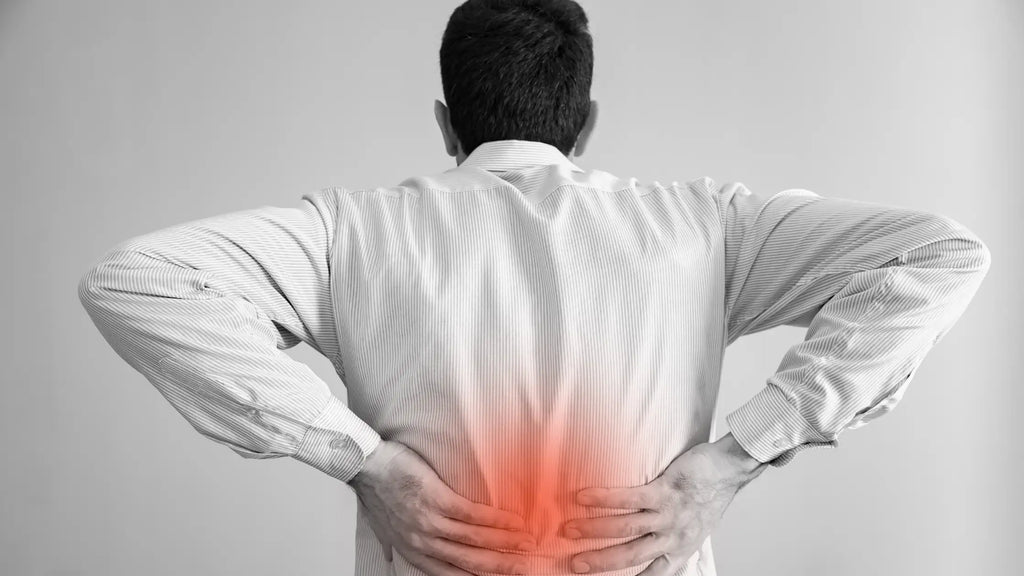
The health benefits of cycling: How to improve your physical and mental well-being

Not only is cycling a fun way to explore the world around you, it also offers a wide range of physical and mental health benefits. Whether you pedal for pleasure, transportation, or exercise, getting on your bike can have a positive impact on your overall well-being. In this article, we will explore the many benefits that cycling can bring to your health.
1. Improved cardiovascular health
Cycling is not only an exciting recreational activity, but also an exceptional ally to strengthen and maintain the health of your cardiovascular system . This benefit goes beyond simply giving your heart a good workout; positively impacts several aspects of your heart health.
1.1 Strengthening the heart and blood vessels
The act of pedaling pushes your heart to work harder, thus increasing blood circulation. This increase in heart rate strengthens the heart muscle, improving its ability to pump blood efficiently. In addition, cycling also contributes to the dilation of blood vessels, promoting smoother circulation and reducing blood pressure. This combined effect works together to decrease the risk of heart disease and improve the overall health of the cardiovascular system.
1.2 Reduction of cholesterol and triglycerides
Regular cycling has been associated with lower levels of LDL cholesterol ("bad" cholesterol) and triglycerides, and with an increase in HDL cholesterol ("good" cholesterol) levels . These changes in blood lipid levels are essential for preventing heart disease and improving vascular health. Cycling not only becomes a cardiovascular exercise, but also an active ally in the management of heart-related risk factors.
1.3 Blood pressure control
High blood pressure is a significant risk factor for heart disease and stroke. Regular cycling has been shown to be effective in controlling and reducing blood pressure , thus contributing to the prevention of cardiovascular problems. Constant pedaling improves the elasticity of the arteries and helps maintain healthy blood pressure levels, further strengthening the cardiovascular system.
1.4 Increase in lung capacity
Cycling not only benefits the heart, but also the lungs. By pedaling, you increase oxygen demand , which drives greater lung capacity. This strengthening of the respiratory muscles and improvement in lung capacity are essential for a healthy cardiovascular system, as they ensure adequate oxygen supply to tissues and organs, thus improving the efficiency of the respiratory system.
2. Weight control and calorie burning
Cycling is emerging as a powerful tool in weight management and calorie burning, becoming a vibrant and effective option for those seeking to maintain a healthy body composition.
2.1 Sustained burning of calories
Riding a bicycle involves a combination of muscle groups , from the quadriceps to the calf muscles and glutes. This multi-sensory engagement not only delivers a complete workout session, but also boosts continuous calorie burning . Even after you complete your ride, your body continues to consume energy in a process known as afterburning , meaning you're burning calories even at rest.
2.2 Metabolic acceleration
Cycling activates metabolism, which is the process by which the body converts food into energy. By pedaling, you are strengthening not only your leg muscles, but also your basal metabolic capacity . This means that as you incorporate cycling into your daily routine, your body becomes more efficient at burning calories even off the bike . This is especially beneficial for those looking to lose weight or keep it under control.
2.3 Adaptability to different fitness levels
One of the most notable advantages of cycling is its adaptability to different fitness levels . Both beginners and experienced cyclists can adjust the intensity of their ride based on their specific needs and goals. From relaxed rides to high-intensity workouts, cycling allows each individual to personalize their experience , making it an inclusive and accessible option for everyone.
2.4 Reduction of body fat
The combination of sustained calorie burning and metabolic activation not only helps in weight loss, but also in the reduction of body fat. Regular cycling contributes to the reduction of visceral fat, which accumulates around internal organs and is associated with a greater risk of chronic diseases. This added benefit reinforces the role of cycling not only as a means of exercise, but as an effective tool for improving body composition.
3. Muscle strengthening and resistance
Cycling is not only a delight for the cardiovascular system, but also a powerful tool for muscle strengthening and endurance development. This low-impact exercise offers specific benefits for various muscle groups, contributing to physical well-being in a comprehensive way.
3.1 Strengthening the legs
The repetitive act of pedaling puts leg muscles, including the quadriceps, hamstrings, calves, and glutes, to work intensely. The gradual resistance these muscles face during cycling not only contributes to their strengthening , but also improves muscle tone and definition. This specific strengthening of the lower extremities is not only beneficial for physical appearance, but is also essential for the structural and functional support of the body.
3.2 Balanced work of muscle groups
Unlike some forms of exercise that may focus on specific muscle groups, cycling provides balanced work for a variety of muscles . In addition to the legs, the core muscles, responsible for maintaining a stable and balanced posture, are also engaged during cycling. This generalized activation of muscle groups guarantees complete and balanced body development.
3.3 Benefits for the back and stabilizing muscles
Cycling, when performed with proper posture, can strengthen the back muscles and stabilizers, providing support for the spine. Constant activity helps maintain good postural alignment, reducing the risk of back pain and improving the overall health of the spine. This strengthening of the stabilizing muscles contributes to the stability of the trunk and improves the body's resistance in various daily activities.
3.4 Development of muscular endurance
Cycling, whether on short or long routes, promotes the development of muscular endurance. As you get used to longer pedaling sessions, your muscles adapt to the constant effort, improving their ability to perform work over an extended period. This increase in resistance not only benefits cycling performance, but also translates into a greater ability to cope with daily activities with less muscle fatigue.
4. Improved balance and coordination
Cycling is not only a vigorous physical activity, but also an invaluable tool for developing and improving fundamental skills such as balance and coordination. These skills are not only essential for cycling performance, but also have a positive impact on various areas of daily life.
4.1 Fine and gross motor coordination
When riding a bicycle, you are faced with the need to coordinate precise and simultaneous movements of different muscle groups. From adjusting the handlebars to steady pedaling and maintaining direction, cycling improves both fine and gross motor coordination . These improvements are not only beneficial for riding the bike, but also result in improved coordination in other daily activities.
4.2 Development of static and dynamic balance
Cycling involves constant balance adjustments in both static and dynamic environments. As you pedal across diverse terrain, your body adapts its balance to changes in slope, surface, and speed. This constant adjustment not only strengthens your stabilizer muscles, but also improves your ability to maintain balance in various situations. This development not only benefits experienced cyclists but also provides a substantial improvement for those looking to strengthen their overall balance.
4.3 Stimulation of the central nervous system
Cycling activates the central nervous system significantly . Coordinating the movement of the lower extremities, maintaining proper body position, and responding quickly to changes in the environment stimulate the nervous system comprehensively. This stimulation contributes to the development of stronger and more efficient neural connections , thus improving general coordination and responsiveness.
4.4 Benefits for preventing falls in older age
Improving balance and coordination through cycling is not only relevant for young enthusiasts; It also plays a crucial role in preventing falls, especially in the elderly population . Strengthening the stabilizing muscles and improving coordination helps maintain a safer and more balanced gait, reducing the risk of falls and associated injuries.
5. Stress reduction and improved mental health
Cycling is not only a physical activity; It also acts as a mental health balm, providing an effective avenue to reduce stress and improve psychological well-being. The combination of physical activity, the outdoor environment and the connection with nature make cycling a powerful tool to take care of your mental health.
5.1 Release of endorphins and improved mood
Cycling triggers the release of endorphins , neurotransmitters known for their ability to relieve pain and generate feelings of well-being and happiness. The feeling of freedom you experience while cycling outdoors, combined with the increase in blood circulation, contributes to an immediate improvement in mood. These endorphins act as a natural antidote to stress, anxiety and depression.
5.2 Digital disconnection and connection with nature
Cycling provides a unique opportunity to disconnect from the daily digital hustle and connect with the nature around you . Whether you choose urban routes or nature trails, the experience of immersing yourself in your natural surroundings promotes relaxation and stress reduction. The contemplation of the landscape and the constant rhythm of pedaling create a mental space conducive to reflection and rejuvenation.
5.3 Improved sleep and reduced mental fatigue
Regular physical activity, such as cycling, has been shown to have a positive impact on sleep quality. The release of tensions accumulated during the walk, combined with the improvement in cardiovascular health, facilitates a more restful and deeper sleep . In addition, reducing stress contributes to the reduction of mental fatigue, allowing you to face daily demands with greater clarity and energy.
5.4 Development of concentration and mindfulness
Cycling requires mindfulness and concentration, as you must be alert to your surroundings, adjust your speed, and coordinate movements. This mindfulness practice contributes to the development of mental concentration and helps free the mind from everyday worries. By being immersed in the present during your walk, you will experience a feeling of calm and mental clarity.
In short, cycling is an incredibly well-rounded activity that offers a variety of physical and mental health benefits. From improving cardiovascular health to strengthening muscles and reducing stress, getting on the bike can be a fun and effective way to improve your overall well-being. So why not strap on your helmet, adjust your saddle and start enjoying the many benefits that cycling has to offer? Your body and mind will thank you!






































